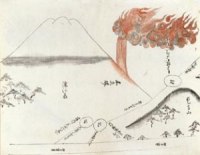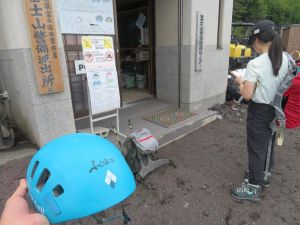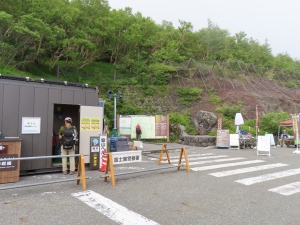Risk5: Volcanic eruption
The horror of an eruption
Phenomena related to eruptions
Eruptions do not always occur at the summit.

eruption hazard-map
eruption alert level
If an Volcanic Warning (Near the crater) or a.k.a. Near-crater Warning is issued, the alert level will be raised from 1 to 3 (Restriction on proximity to the volcano). Everyone in the first evacuation zone, including the entire area above the 5th station, must evacuate. Foreign tourists will be asked to evacuate away from the Mt. Fuji vicinity.
|
|
Name |
Volcanic Alert Levels |
|
Volcanic Warning(Residential area) |
Level 5 (Evacuation) * |
|
|
Level 4 (Evacuation of the elderly, etc.) * |
||
|
Volcanic Warning(Near the crater) |
Level 3 (Restriction on proximity to the volcano) |
|
|
Level 2 (Restriction on proximity to the crater) *In the process of increasing volcanic activity, there is no alert level 2, and it is only used when it is lowered from level 3. |
||
|
Volcanic Forecast |
Level 1 (Potential for increased activity) |
Prepare for an eruption




